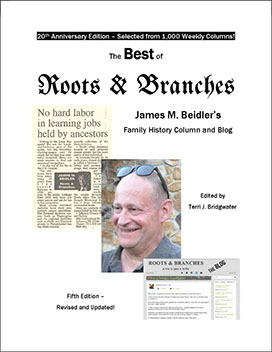Published February 25, 2025
| | Leave A ReplyAn occasional research and lecture topic of mine for the last couple of years has been what I call “The riddle of
the Pennsylvania Germans as enslavers.”
It started with hearing and reading vastly different assessments that tried to quantify the involvement of Pennsylvania Germans in enslavement, and gained momentum when I gave a webinar for Historical Society of Pennsylvania titled “Pennsylvania German Enslavers: Initiating a Re-Examination” in August 2022.
There have been several reasons for doing this. One is simply finding out the facts about the scale of enslavement by Pennsylvania Germans, along with gaining some insight into the “why” of it, and the practical notion that if we’re truly doing “family history,” we need to document everyone who was in house … including any enslaved persons.
I’ve sporadically continued reading the limited literature on the subject since then, but jumped at the chance when Historic Trappe in Montgomery County, Pennsylvania, asked if I’d give a presentation that we titled “Revolution and Registration: Pennsylvania German Enslavers,” keying in on the juxtaposition of the events of 1776 followed closely by Pennsylvania’s gradual abolition law in 1780.
This afforded me the opportunity to do something for which I hadn’t previously made time: Looking over my whole pedigree chart filled with Pennsylvania Germans, honing in on the time frame between 1776 and 1780, and finding out how many enslavers I have in the family tree (from a manumission document, I already knew that one of my ancestors, Nicolaus Kintzer, was an enslaver—and since I’m descended from Kintzer two ways, maybe that’s “one man, two ancestors”).
So I went to the tax lists as the best documentation of enslavers and put together a database of the 90 or so men (and a few widows) who were adults circa 1780.
What I found in my own pedigree seems to echo my previous anecdotal findings: That a relatively small percentage of Pennsylvania German farmers were enslavers. In my case, only three of the 90 ancestors were documented.
There was the expected Nicolaus Kintzer with two enslaved people on his tax list entry. Also having one enslaved person listed was Kintzer’s in-law Thomas Kurr, another large property owner in Tulpehocken Township, Berks County. It was this Thomas Kurr’s namesake son, who was a son-in-law to Kintzer as well as one of his executors, who manumitted the enslaved person George in 1804.
The third individual who held enslaved persons in 1780 was Jacob Lebegud (the translated name is Livingood), who held the largest farm (643 acres) of any of my ancestors at the time—and also held two enslaved persons.
This advances the conversation a bit, but comes with a few caveats, one of them being that I looked only at direct-line ancestors of mine but a casual glance at some collateral relatives from the time shows additional enslavers. We’ll talk about them in next week’s “Roots & Branches” installment.

